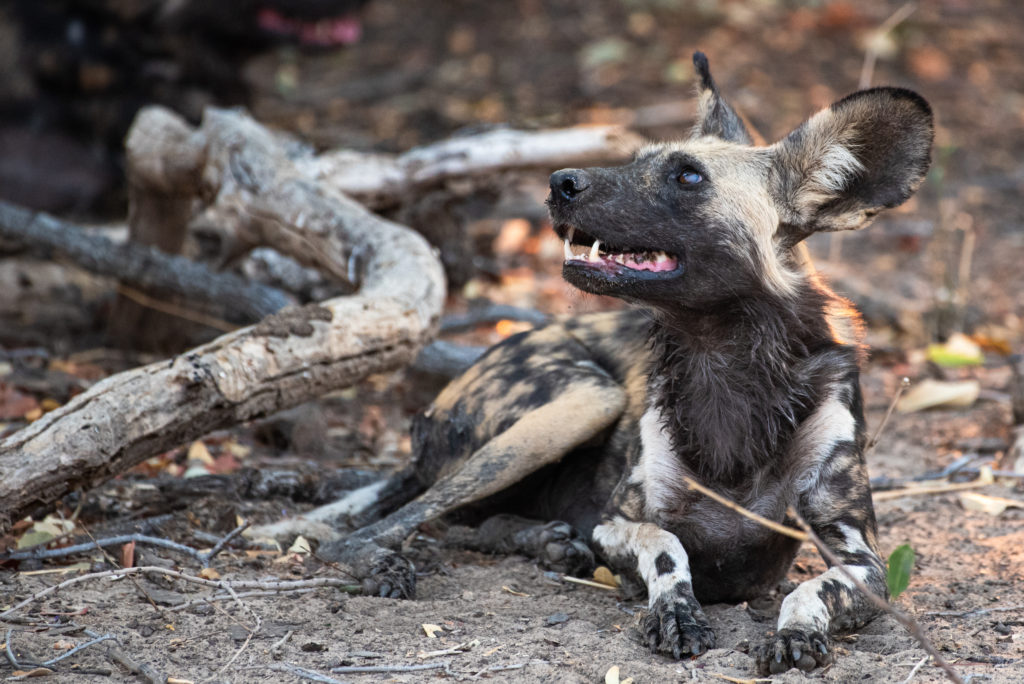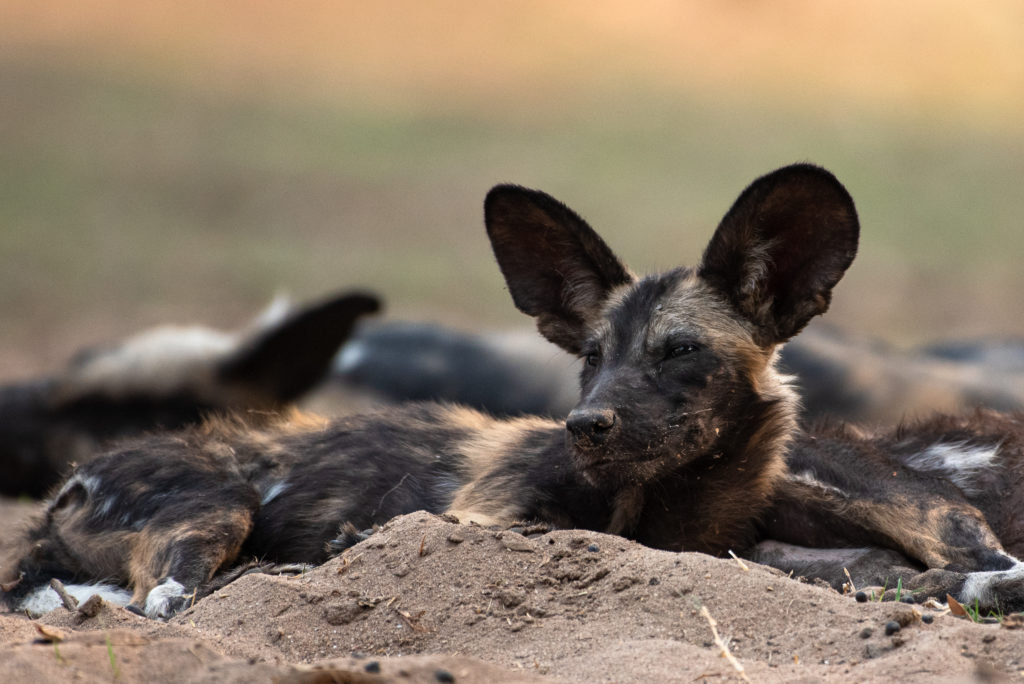
A matriarch is a leader. A general. A decision maker. A caring mother. A matriarch guides her family from the moment of its formation to the moment of her death. A matriarch will die for her children.
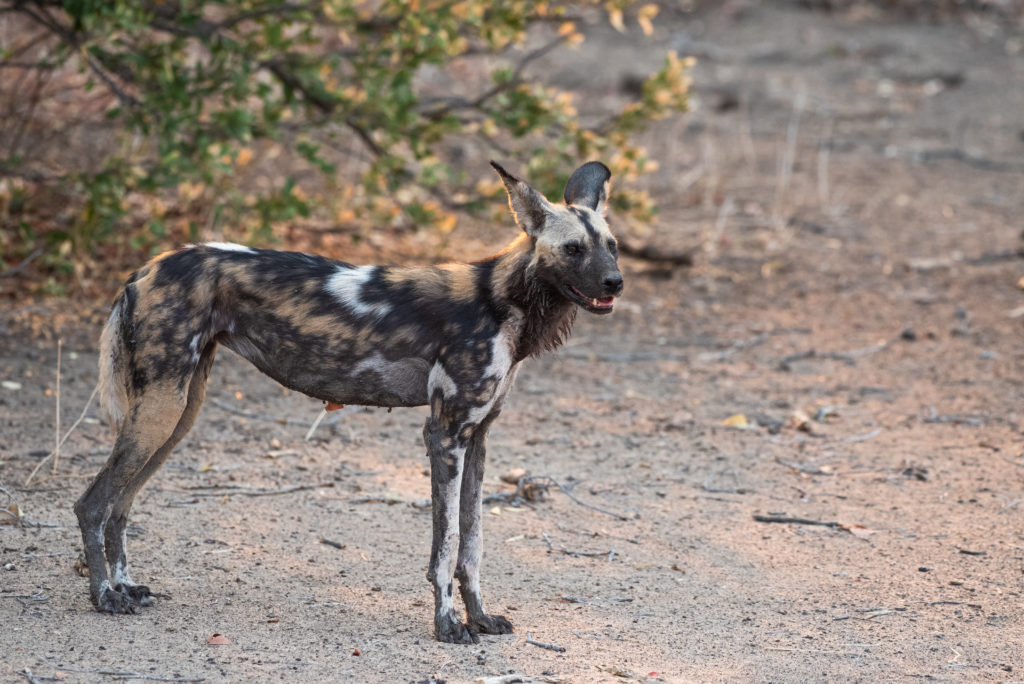
Painted Wolves live in a strict hierarchical system that can safely be called altruistic. In the den, they huddle together to sleep, and when they wake, before leaving for their risky daily business, hunting big game in the wilderness of Africa, they perform long and joyful rituals. Dances that show their mutual love and devotion. Who knows who will return in the end of the day?
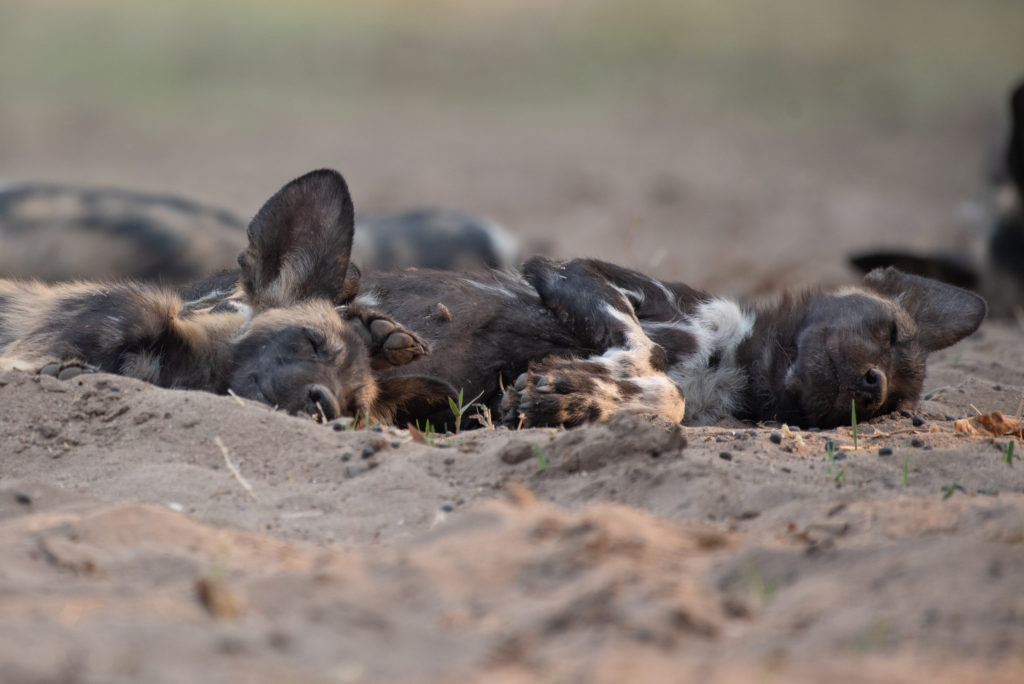
Fights within the pack are rare. Instead, the pack members take good care of each other, feeding incapacitated members, and licking each other’s wounds.
Their leader is the alpha female, the matriarch. When she dies, the pack will dissolve. She and her alpha male are the only ones to breed. Their pups will be looked after by the whole pack. At first the little ones will be fed regurgitated meat when the adult animals return from the hunt, but as soon as the pups are old enough, they will join the hunting party. The youngsters don’t contribute to the hunt yet, they are here to learn, but they will be the first to eat, guarded by the adult animals.
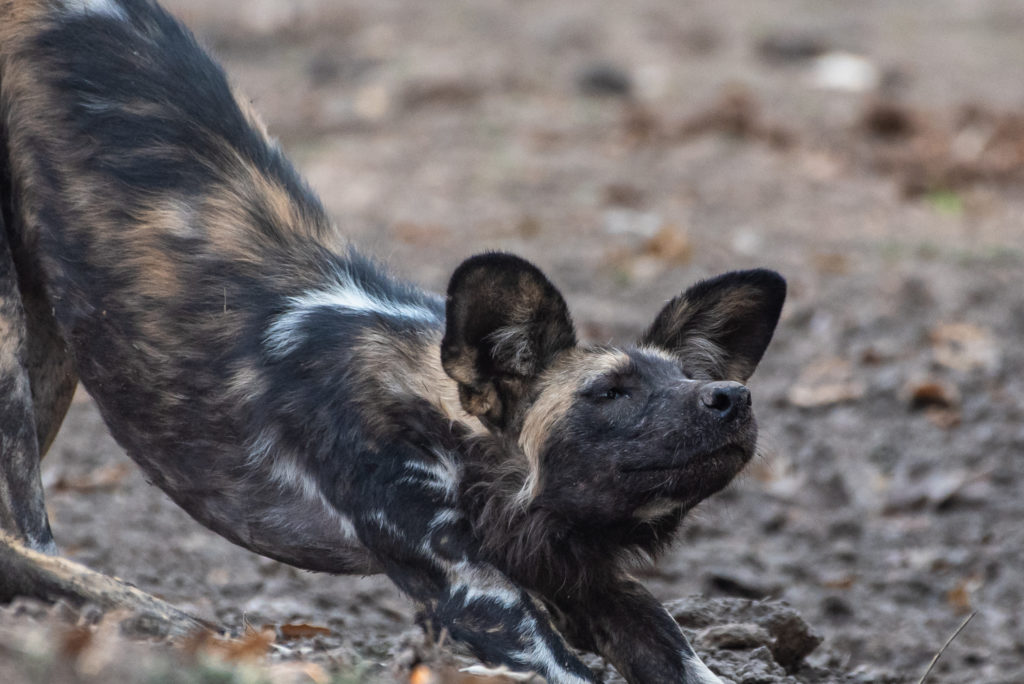
Painted Wolves are formidable hunters. Their success rate lies at 90%, a number that by far exceeds that of other apex predators, like lions, leopards or hyenas, and is undoubtedly owed to their perfect organization.
A typical hunt starts with the pack spreading out to cover more ground and give each member enough space to manoeuvre. Once prey is detected, the pack is called and together they spread panic in the heard to separate them. The ensuing chase will be both long distance – with pack members performing flanking movement to cut off any escape routes, or driving herds towards rivers and waters, deadly traps. And it will be high speed. The prey will tire, but not the painted wolves: Comparable to a cycling team, pack members at the head of the chase will pull back once they’re exhausted and other members will take their place, taking the weakened prey down.
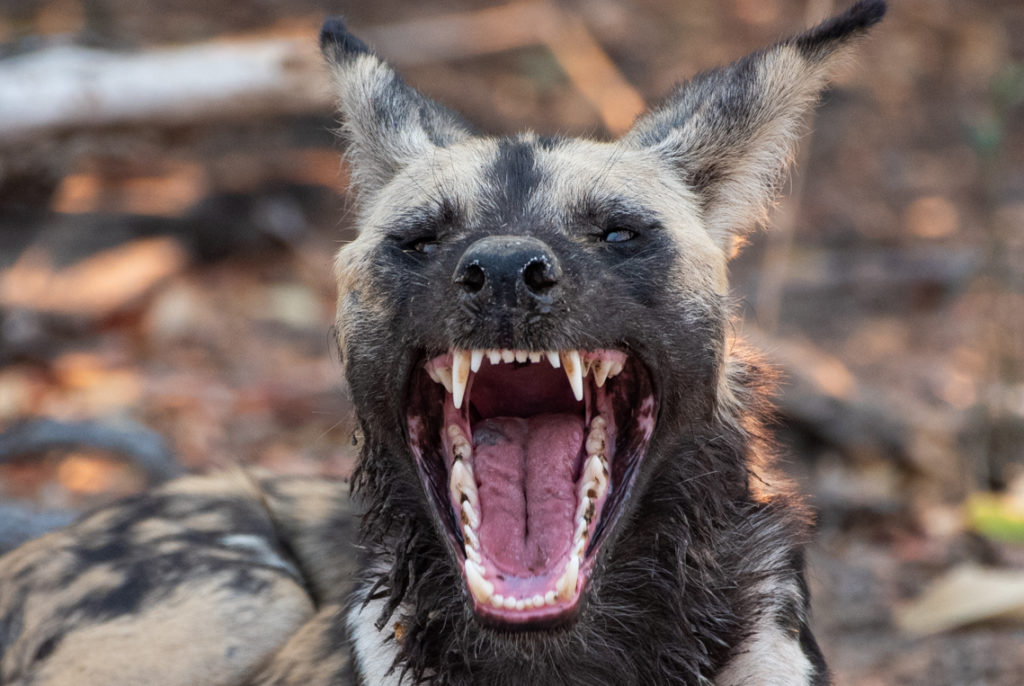
Until the present day, there is no incidence recorded of painted wolves ever attacking humans. In fact, for thousands of years Africans and painted wolves lived side by side. Oldest testimony thereof is a palette from ancient Egypt, than 5000 years old, that depicts the big-eared creatures while dancing. It was only when the Europeans arrived on the continent that things went dire for the Painted wolves.
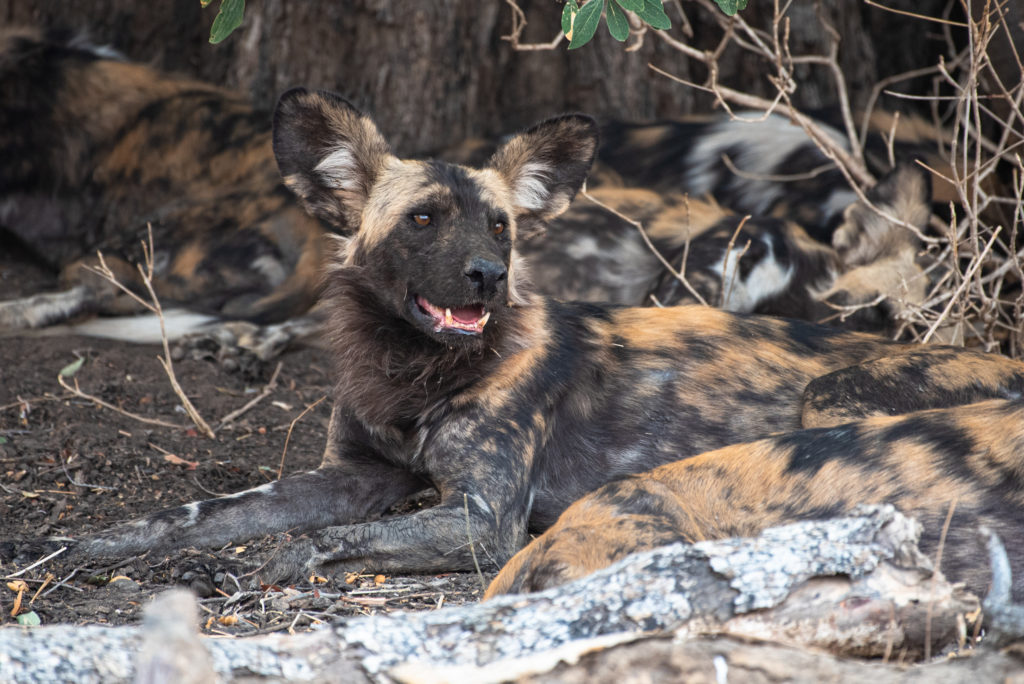
When the Dutch first encountered painted wolves, they thought that they were hyenas – which was wrong. They were soon corrected by the British naturalist Joshua Brookes, who recognized them as canids, and named them: Lycaon Pictus, which is a creative mixture of Latin and Greek, meaning something like: a painted wolf-like thing. What the Romans themselves made of painted dogs, is not known. But they surely held wolves in high esteem, especially when it came to motherhood… With this hybrid name however, Joshua Brookes was closer to the truth. Painted Dogs are neither dogs nor wolves, but their own species.
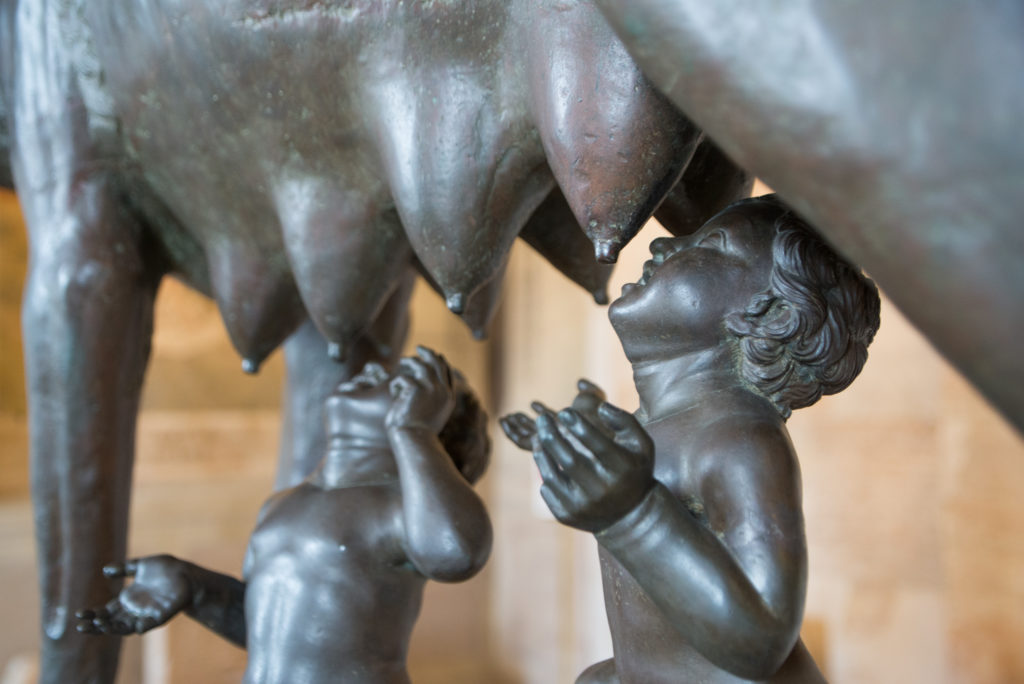
By 1900, painted wolves lived all across the African continent, an estimated 500.000 of them, roaming the savannas, the semi-deserts, bushlands and forests. They lived at the sea shores and even on top of the Kilimanjaro. Then the European settlers started to establish their European ideas of agriculture in their colonies. Painted Wolves, or Wild Dogs, or Painted Dogs, or whatever name they gave them, to the settlers were a vermin. A pest. Their threat to live stock radically overstated.
Rhodesia (nowadays Zimbabwe), which considered painted wolfs “problem animals” until 1975, paid a reward of five shillings for each wild dog destroyed. Their excellent organization was of no help to the painted wolves when it came to shotguns. Government records state that in the 1950ies alone, 3,679 Wild Dogs were killed for reward. That’s more than half the number of Painted Wolves living today: 5000-6000.

Men have decimated the number of Painted Wolves by 99% within a century, making them an endangered species, their number lower than that of elephants (500.000), giraffes (70.000), rhinos (25.000) and lions (20.000).
Habitat loss continues to be the greatest threat for the painted wolves, predators that need large spaces. Their future is looking bleak. The tragic fate of these loving, joyful creatures has been largely ignored by the world.
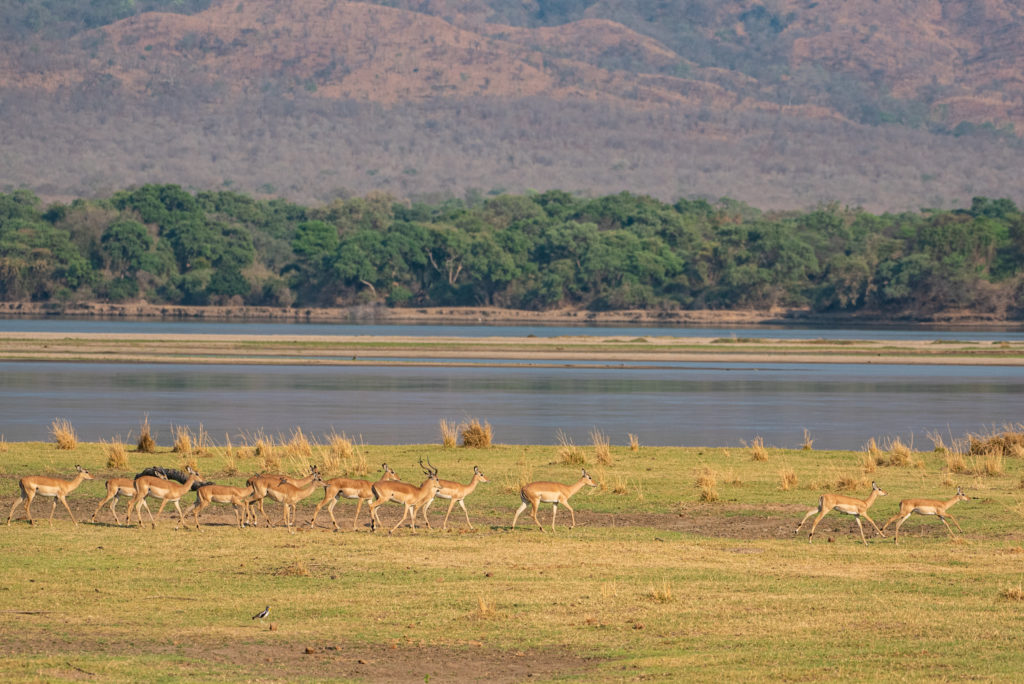
Until David Attenborough’s BBC series Dynasties hit the screens. In the fourth episode he tells the story of Tait, matriarch of a pack living in Zimbabwe’s Mana Pools Nationalpark. Her bravery has not only touched the hearts of a world-wide audience, but turned Mana Pools into a prime eco-tourist attraction. Tourists that bring desperately needed money into the country, and therefore might ensure the survival of the painted wolves.
Recommendation: Painted Wolves by Nick Dyer is not only a beautiful and informative book, shot in the Mana Pools National Park, but its revenue will go into the conservation of Wild Dogs.
https://www.hphpublishing.co.za/products/painted-wolves
